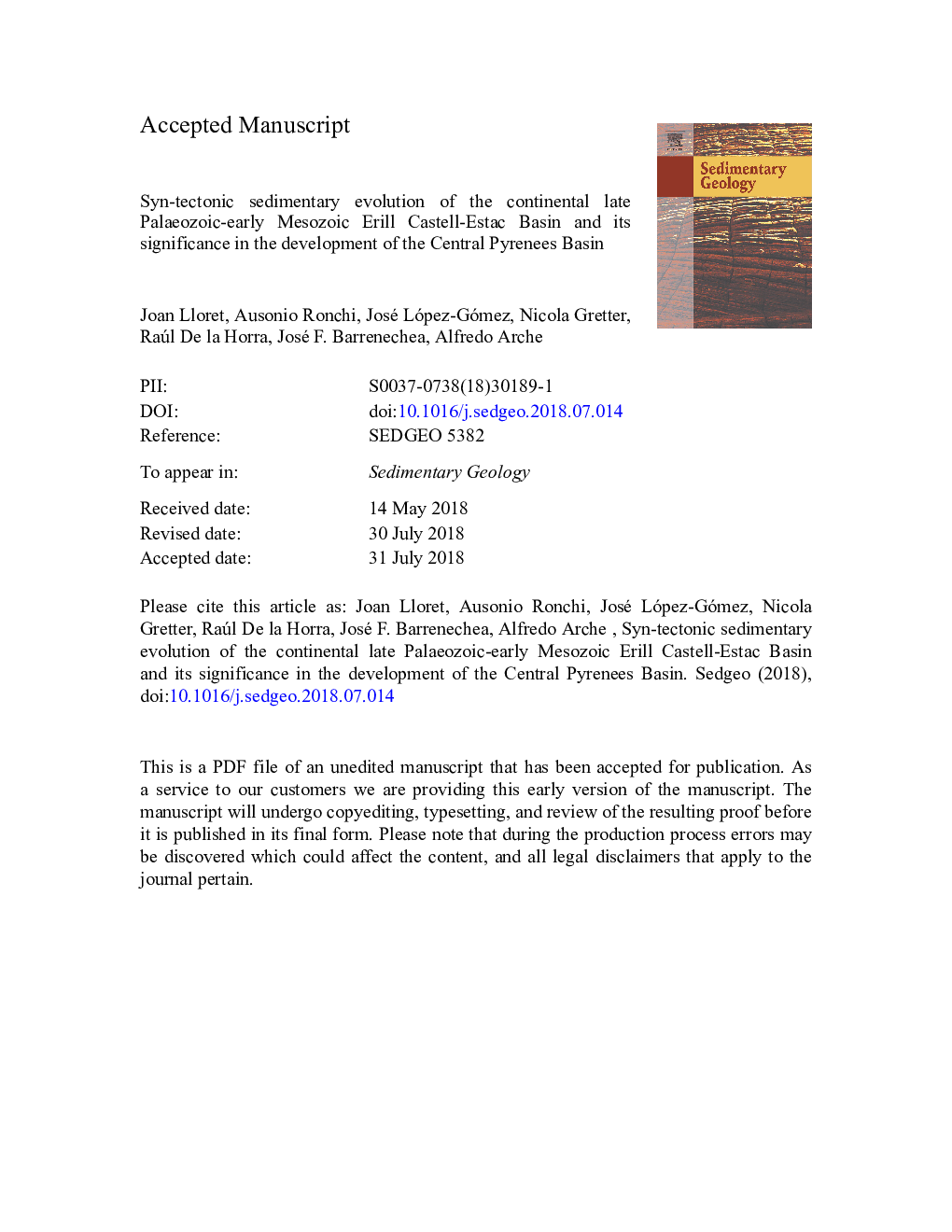| Article ID | Journal | Published Year | Pages | File Type |
|---|---|---|---|---|
| 8908460 | Sedimentary Geology | 2018 | 88 Pages |
Abstract
The break-up of Pangea remains one of the most interesting moments in the Earth's history. In the Pyrenees this geological moment is represented by continental successions, giving rise to a magnificent example of the creation of new basins and their sedimentary fill. In this work we present a study based on stratigraphy, sedimentology and synsedimentary tectonics data; on this basis, we define for the first time the different tectono-stratigraphic phases that occurred in the evolution of the incipient continental basin of the Erill Castell-Estac Basin (Southern Pyrenees, NE Spain). Traditionally, four lithostratigraphic units have been defined in the area and grouped into tectono-stratigraphic units, but we propose three sedimentary cycles characterized by fining upward trends and separated by angular unconformities. The first sedimentary cycle (late Carboniferous-early Permian) is strongly related to intense volcanic activity and is characterized by isolated sub-basins. In the upper part of this cycle, fluvial and lacustrine deposits were deposited in a volcanic and transtensive tectonic context. In the second sedimentary cycle (early-middle Permian), the connection between the sub-basins started in a transtensive tectonic context. The main deposits in this cycle are lacustrine and fluvial, relative to playa-lake environments with a minor volcanic influence. Finally, the third sedimentary cycle (Early-Middle Triassic) is represented by meandering fluvial deposits with scarce lacustrine environments and no volcanic influence. The syn-depositional tectonic context is extensional, at the top of this last cycle the first Mesozoic marine incursions are preserved. Detailed description of the evolution of the Erill Castell-Estac Basin provides a new example of the sedimentary filling of strike-slip basins and is a key point to further considerations of the still unknown role of the Carboniferous to Triassic Pyrenean basins in Pangea break-up.
Related Topics
Physical Sciences and Engineering
Earth and Planetary Sciences
Earth-Surface Processes
Authors
Joan Lloret, Ausonio Ronchi, José López-Gómez, Nicola Gretter, Raúl De la Horra, José F. Barrenechea, Alfredo Arche,
